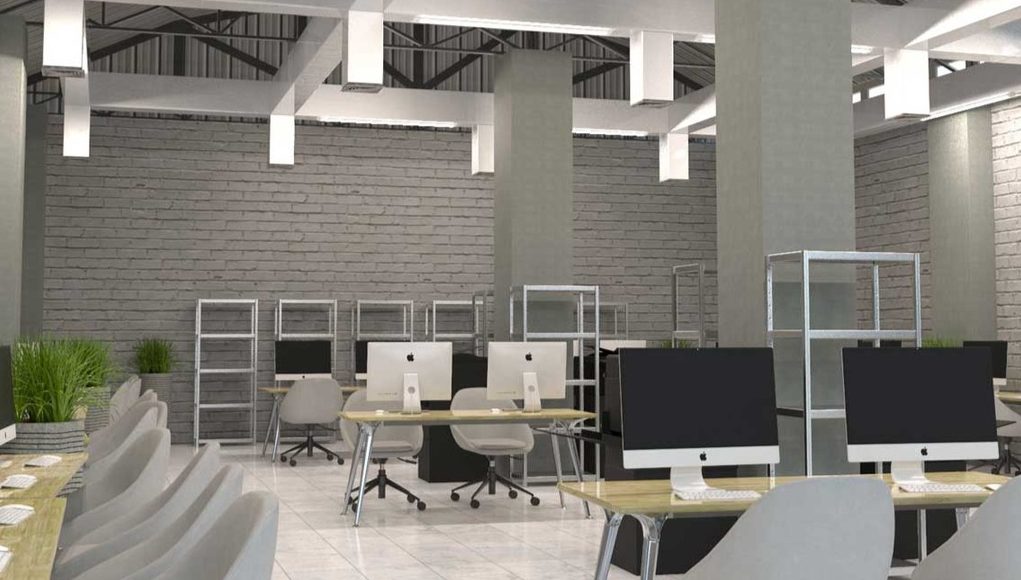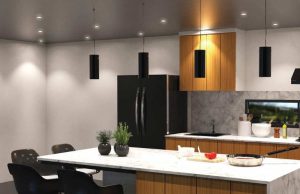Word on the street is your lighting system’s seen better days. Half your fixtures buzz louder than your staff, the corridors resemble a dungeon, and your electricity bill is climbing like it’s training for Everest.
But here’s the good news: you don’t need to call an exorcist. This job calls for an auditor!
A lighting audit shines a light (pun intended) on where your money’s disappearing. Retrofitting, on the other hand, replaces your outdated fixtures with efficient ones that won’t bankrupt you.
Together, they’ll make your business brighter, greener, and less likely to trigger an eye twitch. Let’s flick the switch and get into it.
When & Why Perform a Lighting Audit
Most businesses don’t think about their lighting until someone complains or the power bill causes mild heart failure. By then, it’s too late. You’re stuck working under flickering fluorescents that make everyone look like they’ve been up all night.
A lighting audit basically offers a reality check for your building. It tells you what’s working, what’s wasting, and what’s about to explode (figuratively… hopefully). You’ll find out how much energy you’re bleeding and where those costs are hiding. And it’s usually in places you don’t even notice!
When to Do It
If your lighting system’s older than your intern, it’s time. Or if you’ve moved into a new space and have no clue who installed the lights. Other situations to consider one also include:
- Your energy bills are higher than your office morale.
- Staff are squinting, tripping, or bringing in their own desk lamps.
- You’ve had a lighting upgrade “planned” since 2017.
- You want to brag about being energy-efficient without lying.
Why It Matters
This isn’t just about saving pennies; it’s about saving face. Poor lighting can kill productivity, drain moods, and turn every Zoom call into a ghost story. Good lighting makes everything sharper, from your brand image to your people to your accountant’s smile.
Additionally, most auditors can pinpoint where LEDs, sensors, or layout changes will yield a quick return on investment. You’ll get a clear map of what to replace and how much you’ll actually save.
Think of it as therapy for your building. You’ll experience fewer emotional breakdowns and more data-driven improvements. You wouldn’t ignore your car’s warning lights, so why ignore the ones in your ceiling?
Seriously, if you wait until bulbs start dropping like flies, you’re not auditing—you’re panicking.
Audit Tools & Metrics: Lux, Wattage, Usage Hours
Alright, so you’ve accepted your lighting’s a bit tragic and you’ve called in the professionals. What happens next? Well, it’s not just someone walking around squinting at ceiling panels.
Lighting auditors show up armed with gadgets that make them look like a mix between scientists and Ghostbusters. They measure, test, and record everything that glows, flickers, or hums suspiciously. And yes, they do it with alarming precision.
The Big Three Metrics
Every audit revolves around three key players:
- Lux. That’s brightness, in proper human terms. Not enough, and everyone’s working like they’re in a cave. But too much, and it’s an interrogation room. The trick is balance. Enough light to see clearly, but not so much that you feel judged by your desk lamp.
- Wattage. The energy your lights guzzle. High wattage doesn’t mean “better lighting.” It usually means “hello, massive electricity bill.”
- Usage hours. How long your lights stay on each day. Spoiler: it’s far longer than anyone admits. The auditor checks timers, switches, and the occasional “forgotten” storeroom light that’s been on since 2008.
The Tools of the Trade
Expect gadgets like lux metres, data loggers, and thermal cameras. These little marvels detect hot spots, dark zones, and anything else wasting energy. Some even connect to software that spits out reports more brutally honest than your accountant.
Why It Matters
These measurements don’t just fill a spreadsheet; they guide your next move. They tell you exactly where to trim energy waste, which fittings deserve retirement, and how to make your space shine (literally) without blinding anyone.
In short, it’s the difference between guessing and knowing. And when money’s on the line, guessing is for quiz shows—not business operations.
Spot Issues: Dark Areas, Overlighting, Flicker
Now that your lighting audit has spilt the tea, it’s time to face the ugly truth. Your building probably has more lighting issues than your average reality TV contestant.
The data doesn’t lie. It points out every gloomy corridor, every retina-burning workspace, and every flicker that’s one bad day away from becoming a horror movie.
The Common Offenders
- Dark areas. Those moody corners that make staff look like they’re plotting something. They’re not mysterious; they’re just underlit.
- Overlighting. The opposite problem. Spaces so bright you could perform surgery in the break room. Overkill, quite literally.
- Flicker. The subtle menace. You don’t notice it straight away, but your headache sure does.
The Real Cost
Bad lighting isn’t just ugly; it’s expensive. It slows productivity, increases mistakes, and makes people cranky. Ever wonder why your team looks half-asleep? Check the bulbs before blaming the coffee.
It also affects safety and compliance. Poorly lit areas are trip hazards waiting to be sued. Overlit ones waste energy faster than a teenager’s gaming setup.
How to Fix It
- Swap dodgy bulbs for LEDs.
- Reposition fixtures where light’s actually needed.
- Clean diffusers (dust blocks more light than you think).
A few clever tweaks can make your workplace look—and feel—brand new.
It’s practically like an office facelift, minus the downtime and awkward compliments.

Retrofit Options: LED, Controls, Re-layout
By now, you’ve faced the cold, fluorescent truth: your lighting setup is as outdated as dial-up internet. But fear not, redemption awaits! Enter, retrofitting! It’s basically giving your building a glow-up, minus the influencer selfies.
A retrofit means upgrading your old, power-hungry lights with modern, efficient alternatives. Think of it as trading your 2005 flip phone for a smartphone. Same basic function, just smarter, cheaper, and much prettier.
LED Retrofits
If you’re still clinging to fluorescent tubes, it’s time for an intervention. LEDs use up to 80% less energy, last ages, and don’t buzz like an angry bee. They also make colours pop properly. No more “why does everyone look ill in this meeting room?” moments.
You’ll save on maintenance, too! LEDs rarely need replacing, which means fewer ceiling climbs for whoever drew the short straw that week.
Smart Controls & Automation
Want your lighting to behave like it has a brain? Add controls.
- Motion sensors turn lights off when no one’s around. Empty rooms don’t need spotlights after all!
- Daylight sensors automatically adjust brightness, so you’re not wasting watts on sunny days.
- Timers ensure the office doesn’t glow all night like a haunted showroom.
You’ll save money without even trying. It’s the lazy person’s dream.
Re-layout & Design Refresh
Sometimes, the problem isn’t the bulb. It’s where you’ve stuck it.
Reassessing your layout can completely transform your space. Move lights to where people actually work, not just where it looked nice on the blueprint.
Place accent lighting in lobbies, task lighting at desks, and ambient lighting in common areas. It’s about lighting smarter, not harder.
Specialised Retrofits
- Warehouses. High-bay LEDs for serious brightness.
- Offices. Sleek panels with even, natural tones.
- Outdoors. Weatherproof fittings that laugh in the face of rain.
Retrofitting isn’t just an upgrade. It’s a personality change for your building. One that pays for itself and makes you look like you know what you’re doing.
Cost Estimation & Payback Calculations
Now that your building’s had its glow-up, let’s talk about everyone’s favourite subject: money. Because while saving the planet sounds noble, saving pounds gets people actually listening.
Lighting retrofits aren’t charity work; they’re an investment. And like any good investment, you’ll want to know how soon it’ll start paying for itself. Luckily, lighting upgrades tend to be one of the rare improvements that actually do.
What Determines the Cost
Your price tag depends on how much of a diva your current setup is. Factors include:
- Fixture quality. Cheap fittings look fine until they don’t.
- Smart controls. Motion sensors and timers may cost more upfront, but they quickly pay for themselves.
- Installation. Skilled electricians don’t come cheap. But hey, neither do electrical fires!
- Incentives. Rebates, grants, and energy-efficiency schemes can take the sting out of the total.
The Payback Math (Without the Pain)
Here’s a simple rule: the more energy you waste now, the faster your upgrade pays off. The formula goes something like:
(Old wattage – New wattage) × Hours used × Electricity rate = Savings.
Then, divide your project cost by those savings to find your payback period. Anything under three years, you just laugh it off!
Some retrofits even pay back in twelve months. Profitable lighting, imagine that!
The Extra Perks
You’re not just trimming your power bill. You’re slashing maintenance costs, boosting comfort, and increasing property value. Plus, your accountant will probably start sending you thank-you emails.
It’s not just a cost; it’s a comeback! Your lighting goes from outdated and overpaid to efficient and downright respectable.
Basically, you stop funding your energy company’s holiday bonus and start funding your own.
Implementation Phasing & Business Continuity
You’ve crunched the numbers, nodded approvingly, and signed off on the plan. Now comes the fun part: actually doing it. And by “fun,” I mean making sure your business doesn’t grind to a halt while people hang off ladders.
A lighting retrofit doesn’t have to feel like open-heart surgery on your building. With the right plan, it’s more of a quick facelift (with fewer bandages).
Phase It Like a Pro
Start small. Test one area before going all-in. Measure the energy drop, the brightness improvement, and the staff complaints (ideally zero). Once you know what works, scale up.
Go floor by floor or section by section. No one should have to work in darkness while the electricians “just finish this bit.”
Keep the Lights (and Business) On
Schedule installation outside of peak hours, after closing time, over weekends, or during low-traffic days. No one likes dodging toolboxes during a meeting. Keep emergency lighting running and make sure exits still glow reassuringly red.
Oh, and please hire professionals. “Dave from accounting” might be handy with a screwdriver, but that doesn’t make him an electrician.
The Smooth Transition
Done right, your retrofit will barely interrupt the workday. You’ll swap flickering fluorescents for sleek LEDs, and the only noticeable difference will be the sudden drop in headaches—and your energy bill.
Business continues. Lighting improves. Everyone wins.
Metrics for Success & Post-Audit Check
You’ve survived the ladders, cables, and suspiciously long “quick fixes.” The lights are on, the bills are down, and your office finally looks like a workplace (instead of a crime scene). Now what? You check if all that effort was actually worth it.
A post-retrofit audit isn’t optional; it’s your proof that you didn’t just spend money to feel virtuous. It’s where you measure, compare, and—ideally—pat yourself on the back.
What to Measure
- Energy consumption. Your bills should be shrinking faster than your patience during meetings.
- Light levels. No more squinting contests or “why is this corner still gloomy?” complaints.
- Maintenance frequency. If your ladder’s gathering dust, that’s a good sign.
- Employee feedback. People love to complain. If they’re quiet, you’ve nailed it.
The Post-Audit Routine
Schedule a follow-up check a few months after installation. Compare your new energy data to your old one. If your usage hasn’t dropped, something’s off (probably that “temporary” wiring Gary promised to fix).
Regular maintenance keeps things running smoothly. Clean fittings, check sensors, and replace the odd rogue bulb. LEDs last a long time, but not until the apocalypse.
Celebrate the Glow-Up
If your bills are lower, your space looks brilliant, and no one’s reported migraines lately—congratulations! That’s your success metric right there.
You didn’t just modernise your lighting; you levelled up your entire workspace.
Flip the Switch—Light Smarter, Save Bigger
You’ve got the knowledge. Now it’s time to put it to work. A lighting upgrade isn’t just about brightness; it’s about boosting efficiency, saving money, and making your space actually look alive.
At Simple Lighting, we make that easy! From energy-saving LEDs to smart lighting controls, we’ve got everything to help your business shine—literally and financially.
So, stop wasting watts and start lighting smarter. Visit Simple Lighting today and see how effortless brilliance can be.














